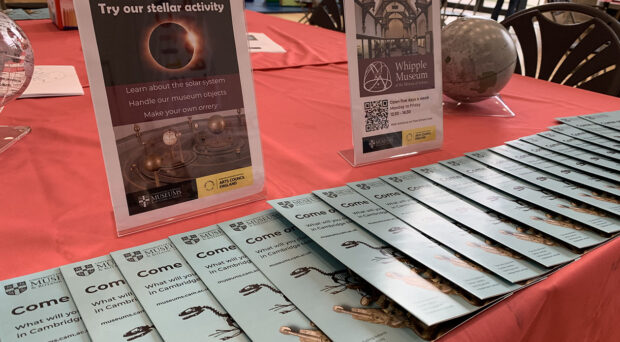In September, the Museum of Classical Archaeology worked with Clivedon Conservation to remove their rare plaster cast of the Medusa pediment from the Temple of Artemis on Corcyra (modern-day Corfu) for essential conservation work.
Although the conservation of the main body of the Medusa cast and some of the other pieces of the pediment was carried out by Clivedon Conservation, an outside firm, some of the pieces that stayed behind at the Museum of Classical Archaeology were also in need of conservation before they were re-installed with the main body.
One such piece was Medusa’s right arm, which had suffered extensive staining in the past. This staining was visually disruptive and impacted the experience for the viewer. The objective for this piece was to remove the staining, ensure the stability of the object for display, and improve the visual cohesiveness of both the surface of the arm and the overall appearance with the rest of the body. The goal in improving the appearance of the arm was not to make it look ‘perfect’ but to decrease the obviousness and disruptiveness of the stark vertical lines created by the staining.
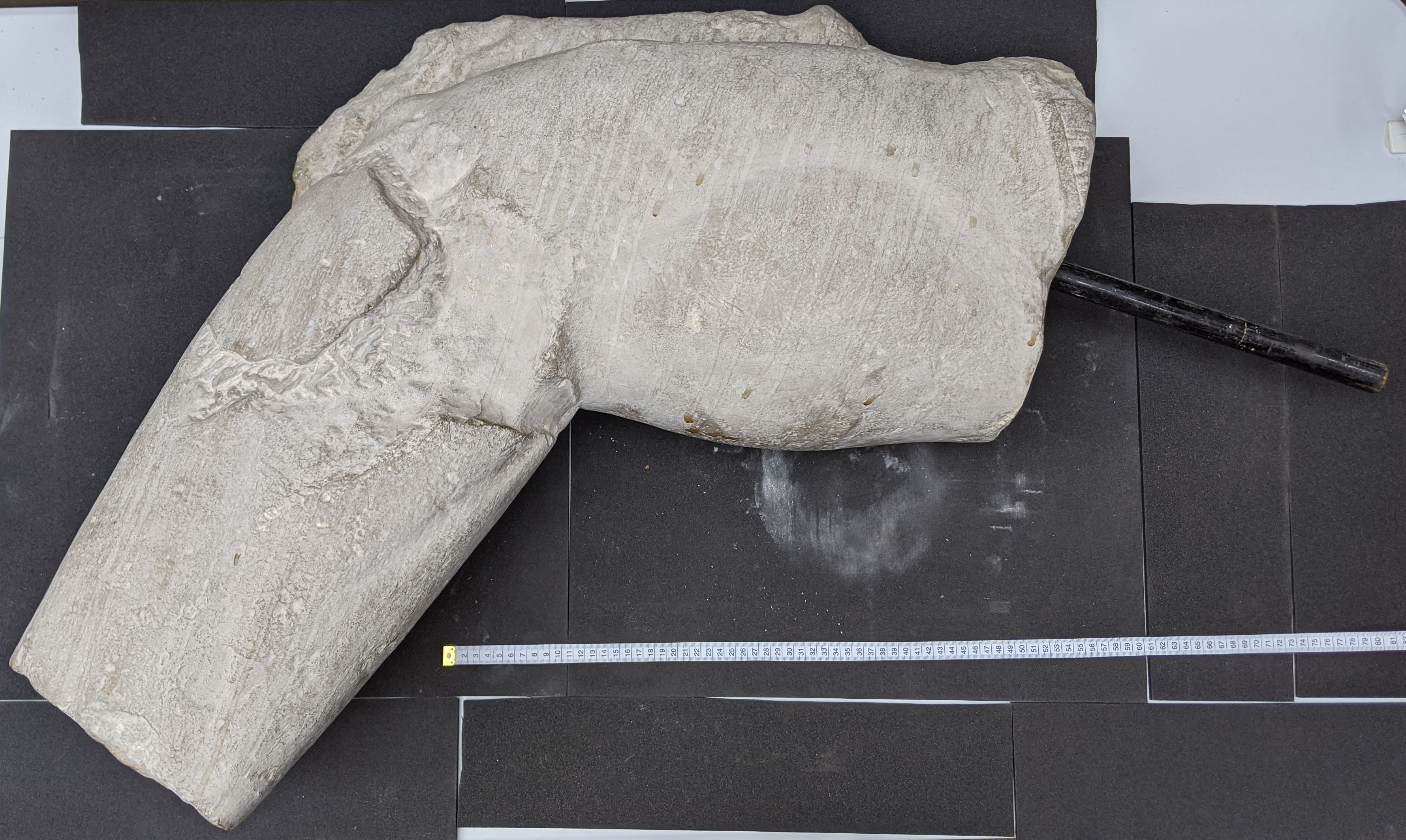
The first step was to remove the dark patches of staining which had collected at the bottom of the droplets and left accretions on the surface of the arm. These were gently removed mechanically and then remaining residue lessened very carefully with an appropriate solvent to remove as much residue as possible. The tracks of the water staining were lessened with a very gentle dry abrasive common to sculpture conservation, and then selected areas were painted very minimally to blend them in visually to no longer jump out at the viewer.
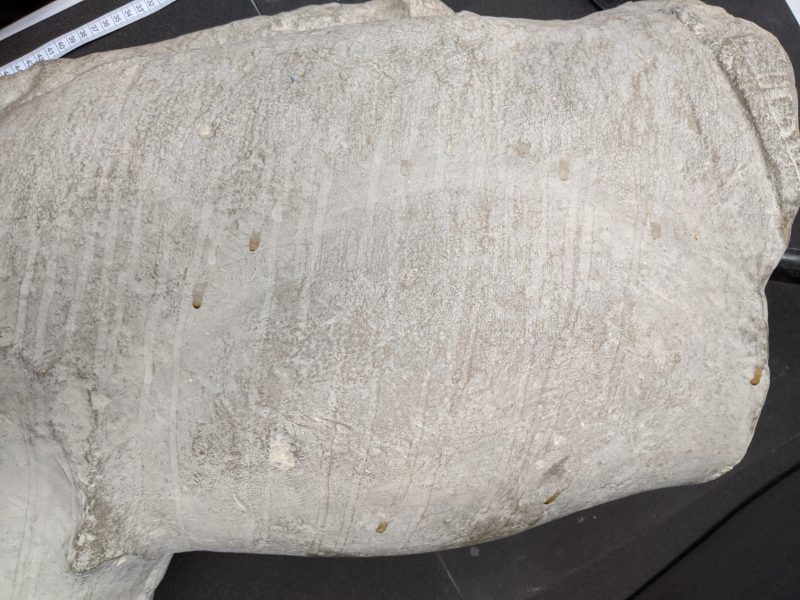
Cracks around the structural support of the object were consolidated to prevent spreading and worsening in the future. One larger crack was aesthetically filled and inpainted to appear visually cohesive with the rest of the object.
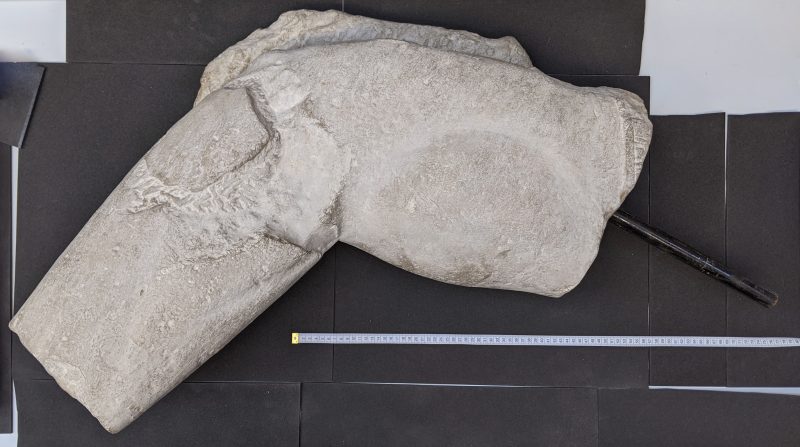
When the arm was rehung with the rest of Medusa, its existing structural support was reused, and an additional bracket was placed at a weight-bearing point to prevent further damage from the objects’ own weight while on display.
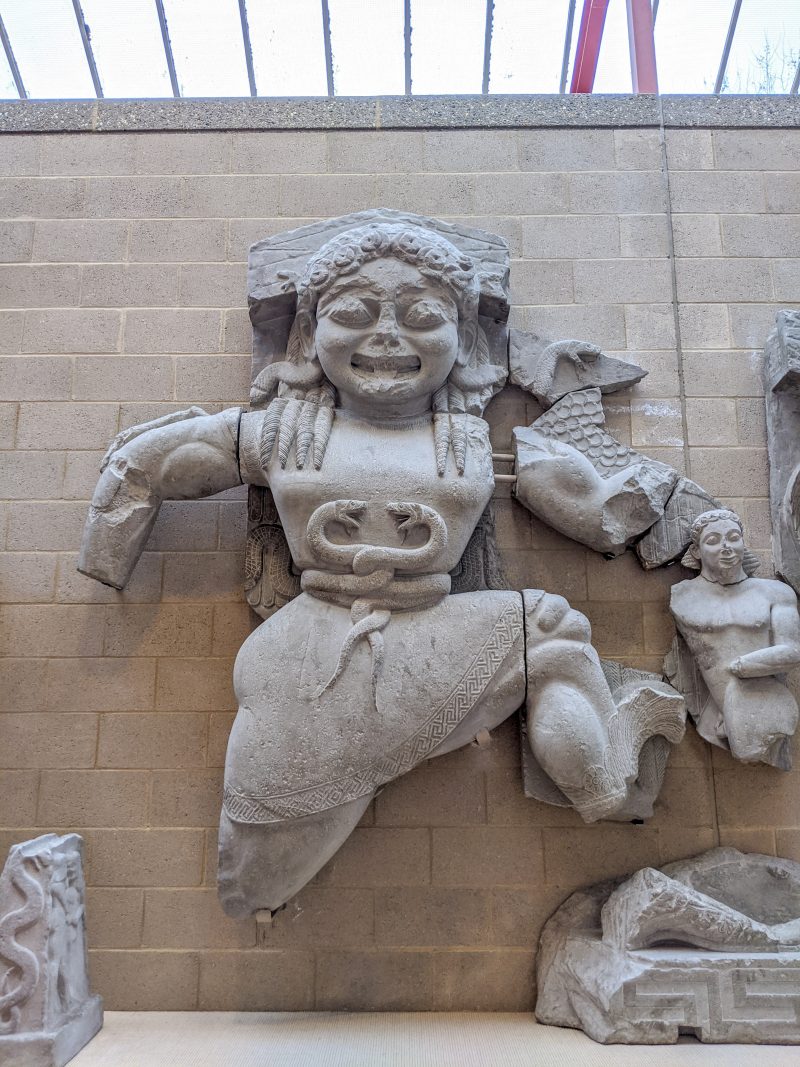
This project was so interesting to undertake! The fact that it was a piece of a larger whole meant that many factors needed to be considered, and the final visual result was always at the forefront. The staining removal was very successful, and it was a really interesting challenge to blend the appearance with the rest of the object. Because Medusa has had several paint ‘touch-ups’ in her past (the different layers of paint are evident on the back of the casts), the surface wasn’t meant to look ‘perfect’ or it wouldn’t have matched the rest of the body. Finding a good equilibrium, where the staining was no longer visually distracting but the arm blended with the rest of the body, was a very engaging process.







